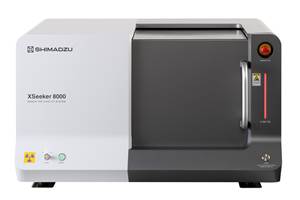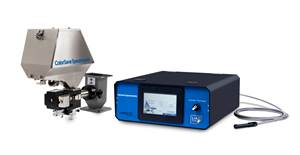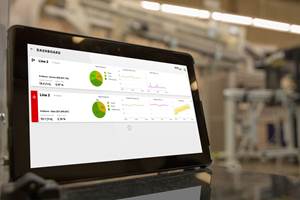Now It's Here: An Objective Test of Masterbatch Dispersion
There's a new grading system for color concentrates and additive masterbatches.
There's a new grading system for color concentrates and additive masterbatches. It's the European test of melt dispersability known as FPV or Filter-Pressure Value. It's reportedly more stringent than the ASTM dispersion test and a more objective indicator of both dispersion quality in a concentrate and how well it will disperse in a polymer matrix. Above all, it's a single number that shows how a concentrate compares with other products.
The new standard, DIN-EN13900-5, was released only recently. But already customers for compounds are asking for FPV numbers, since European suppliers of concentrates are touting theirs.
What's an FPV?
The basic principle is that you run compounded material through a screen mesh, which gradually blocks up with trapped particles. The time it takes to block and the degree of pressure build-up are a good indication of how well dispersed the masterbatch was. The test procedure calls for feeding the extruder for a period of time only the matrix polymer without masterbatch to get a baseline die-pressure reading. Then you introduce the masterbatch and record how pressure builds as undispersed pigment or other additive is trapped on the screen pack. The test is a combination of time and pressure peak. After a set time, you reintroduce virgin material into the extruder, and the pressure plot starts to drop to show that you are ending the test.
The test takes about half an hour and uses 5 to 10 lb of material. The result is an objective single number for FPV, which is the pressure increase divided by the weight of pigment used. Calculations and record keeping can be done by hand on a clipboard or automatically with a computer.
Even though it's not fully published, the general requirements of the test are known: a lab extruder, a standard 1-in. melt pump with pressure sensors, a filter screen, control panel, and pressure display. The difference from the ASTM test method (D 3218, "Standard Specification for Polyolefin Monofilaments") is that ASTM doesn't use the melt pump but puts the screens directly on the single-screw extruder. The problem with that is that as the screens block up, backpressure increases, which can actually improve mixing, thus skewing the results. The only indication this may be happening is a drop off in throughput. The DIN-EN method, however, keeps the volume throughput constant with a gear or melt pump.
European resin companies already use the numbers as a marketing tool, claiming their color concentrates have a "very low filter-pressure value." An FPV of 2 is typical. A recent BASF data sheet boasts that its Paliotol yellow has an "incredibly low" FPV of 0.2 bar/g. (BASF in Germany is on the DIN committee that developed the test.)
Improving QC
Dispersability of additive packages is important to any molder or extruder and is especially critical in two markets: fiber spinning, where improperly dispersed pigment can block spinnerets; and automotive, where it can create color differences in molded parts.
DIN-EN-13900-5 is considered a big improvement over ASTM's test and is already affecting masterbatch quality. "It's changing the way compounders manage QC because once you publish numbers, you have to keep checking them to be sure that's what you're selling," notes Simon Dominey, business manager at Davis-Standard Corp., Pawcatuck, Conn., which markets a DIN-EN-13900-5 test device, the KXE-FPV pump (reported in our April issue).
"Some companies have gone to continuous sampling every hour to be sure their process is stable," Dominey adds. The most quality-conscious compounders, like those who make carbon-black dispersions, were already using a melt pump on their lab extruders and sampling continuously, even with the ASTM test, he says.
Some color compounders and additives manufacturers also use the test device for new product development or to diagnose customer problems. Dominey cites the example of a color compounder that was reformulating a red concentrate. Without the compounder's knowledge, the customer also switched the matrix resin it was using to one with a different additive formulation. The DIN test showed worse results with the new concentrate and matrix resin than with the prior formulations. In the past, the blame would typically have fallen on the concentrate. But in this case, the compounder was able to determine that some additive in the new resin was negatively affecting pigment dispersability.
Dominey sees a wide range of utility for the new test. Recycle compounders, for example, could use it to quantify contamination levels.
Buyer beware
"If you're competing with a compounder whose product has an FPV of 2, and your FPV number is three, you may not want to publish that," notes Davis-Standard's Dominey. "Some people have run the test, gotten disappointing numbers, and told their customers that they don't have the test equipment yet."
There may be some loopholes in the test protocol. If a compounder substitutes a twin-screw lab extruder for the single-screw, or uses a special mixing screw, it could get better FPV numbers that would be meaningless if they don't represent what an average molder or extruder would experience with that additive in a typical injection machine or extruder.
Above all, the FPV number should be consistent from one test machine to another. Which means smart masterbatch buyers should check the test out for themselves.
Related Content
X-Ray Vision Inside Parts Gets More Affordable for Processors
Shimadzu’s new benchtop x-ray CT scanner provides internal and external metrology and flaw detection at a fraction of the previous cost.
Read MoreDatacolor Acquires Matchmycolor
The acquisition of the specialist in color formulation and communication software further expands Datacolor’s global industry presence in color management.
Read MoreColor-Measurement for Extrusion, Molding
System helps processors control the cost of quality due to color variations, using real-time color data for QC analytics and color optimization.
Read MoreHow Inline Vision Inspection Can Minimize Scrap in Molding
Once viewed by injection and blow molders as a necessary evil, machine vision technology today can continuously monitor and improve production while reducing costs.
Read MoreRead Next
People 4.0 – How to Get Buy-In from Your Staff for Industry 4.0 Systems
Implementing a production monitoring system as the foundation of a ‘smart factory’ is about integrating people with new technology as much as it is about integrating machines and computers. Here are tips from a company that has gone through the process.
Read MoreLead the Conversation, Change the Conversation
Coverage of single-use plastics can be both misleading and demoralizing. Here are 10 tips for changing the perception of the plastics industry at your company and in your community.
Read MoreUnderstanding Melting in Single-Screw Extruders
You can better visualize the melting process by “flipping” the observation point so that the barrel appears to be turning clockwise around a stationary screw.
Read More



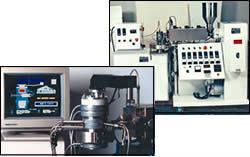
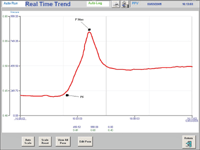














.png;maxWidth=300;quality=90)
